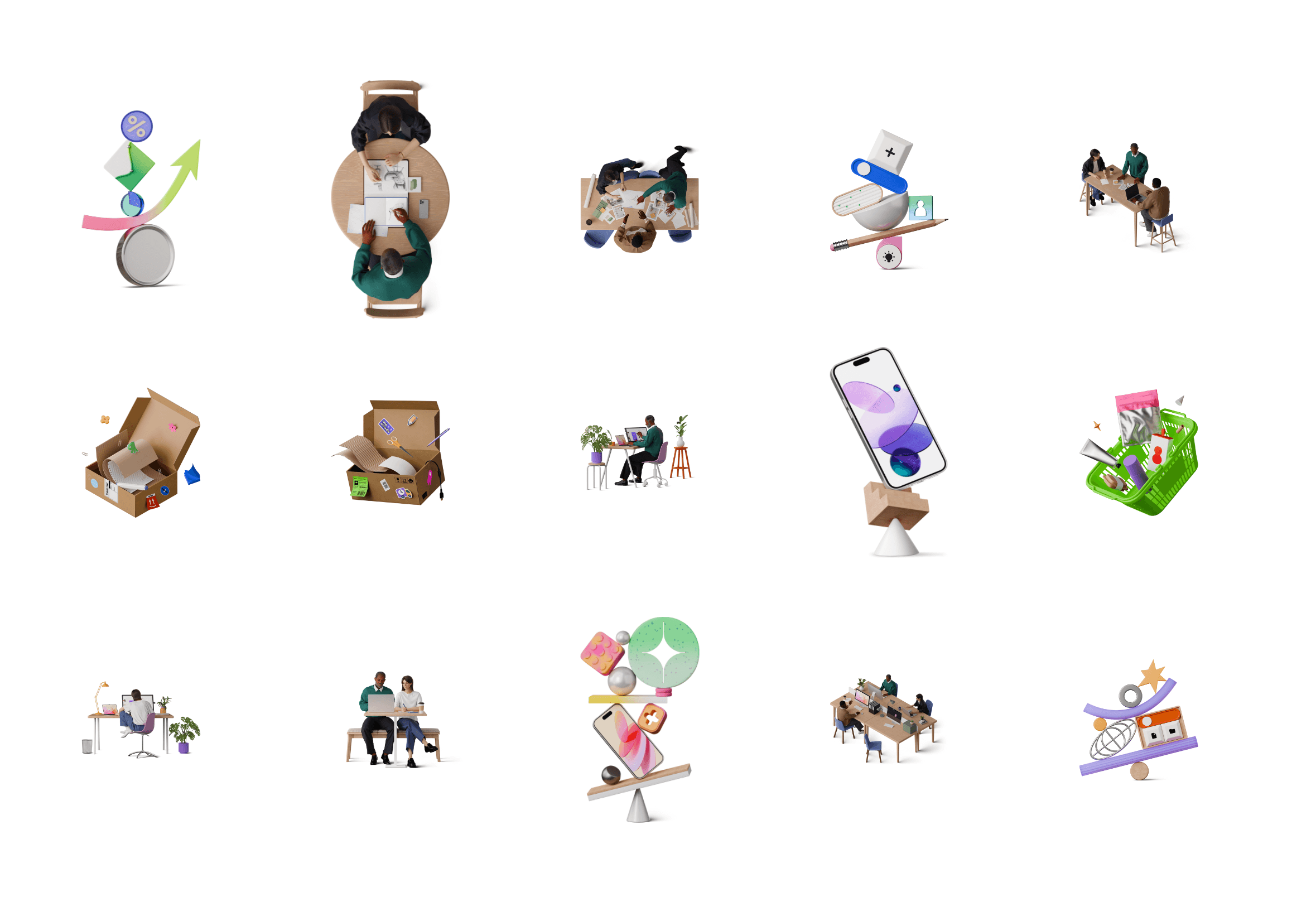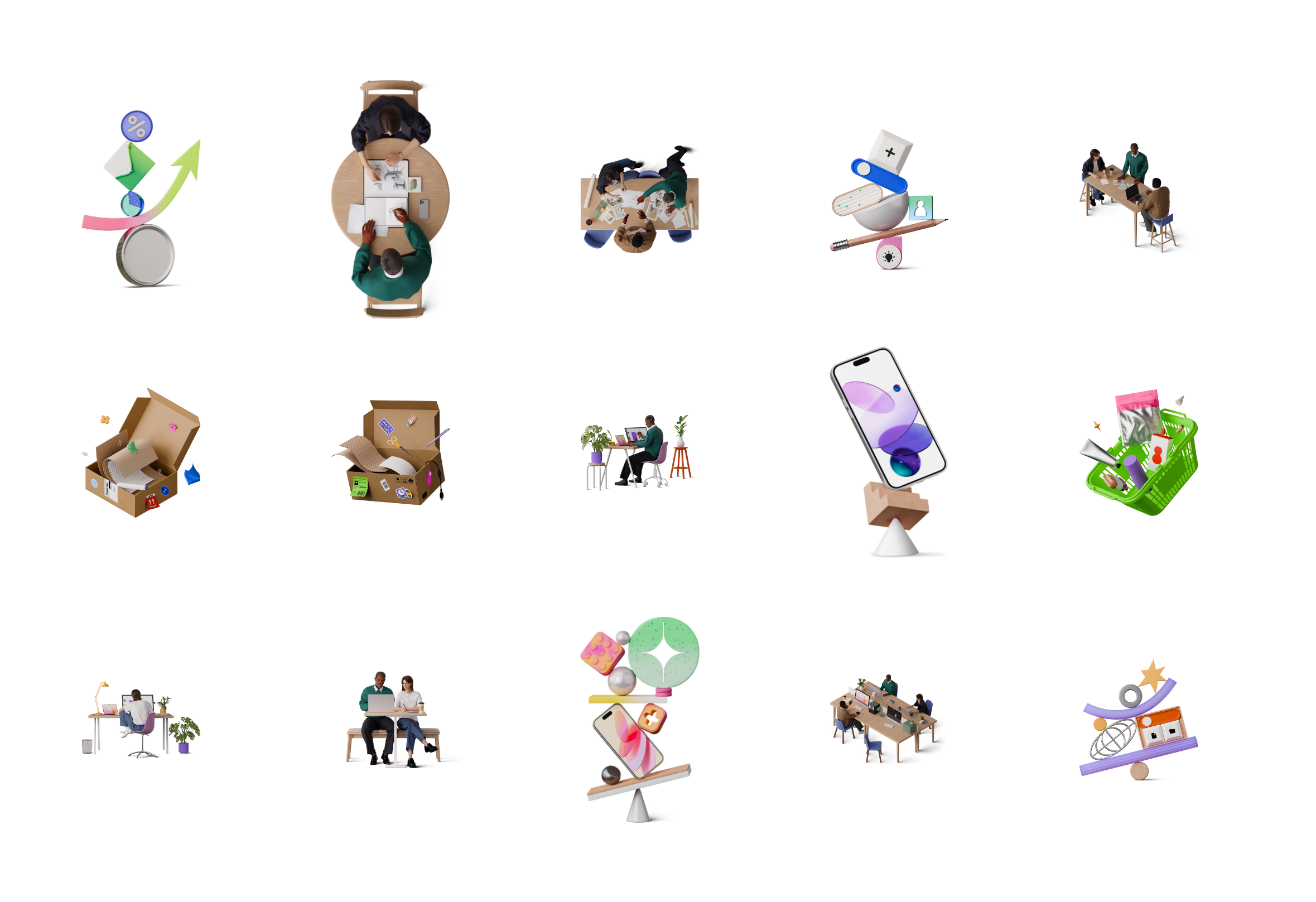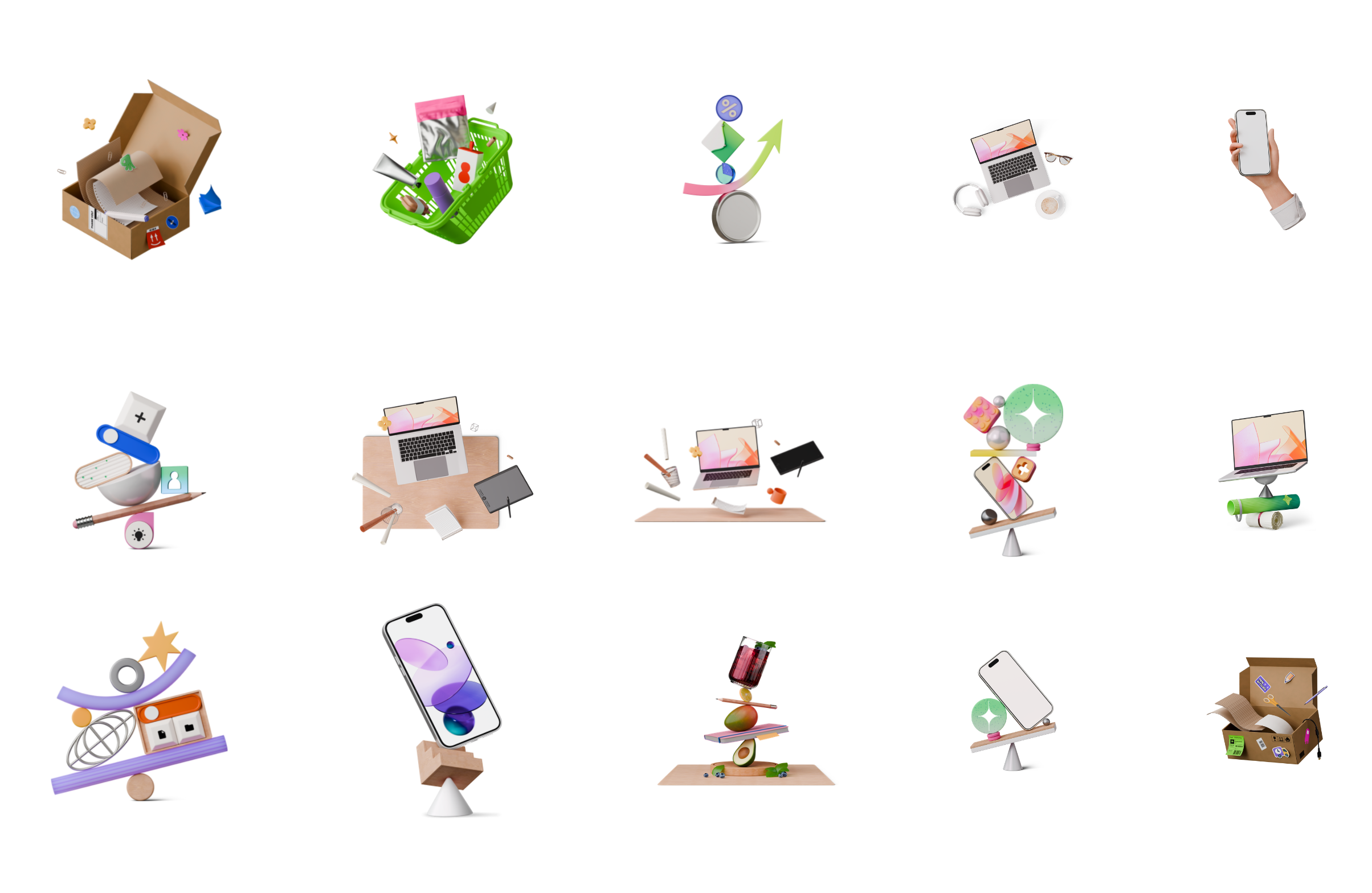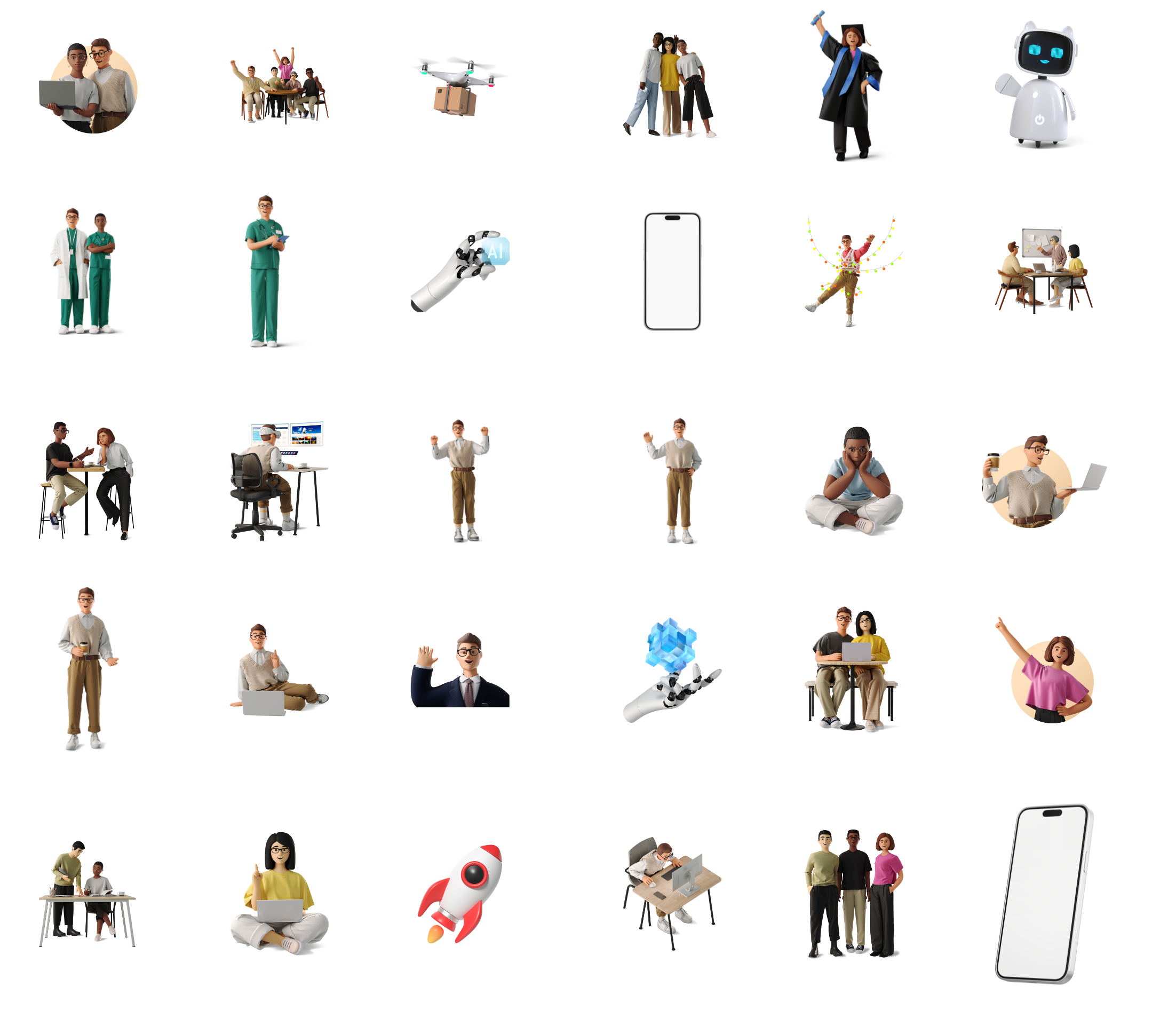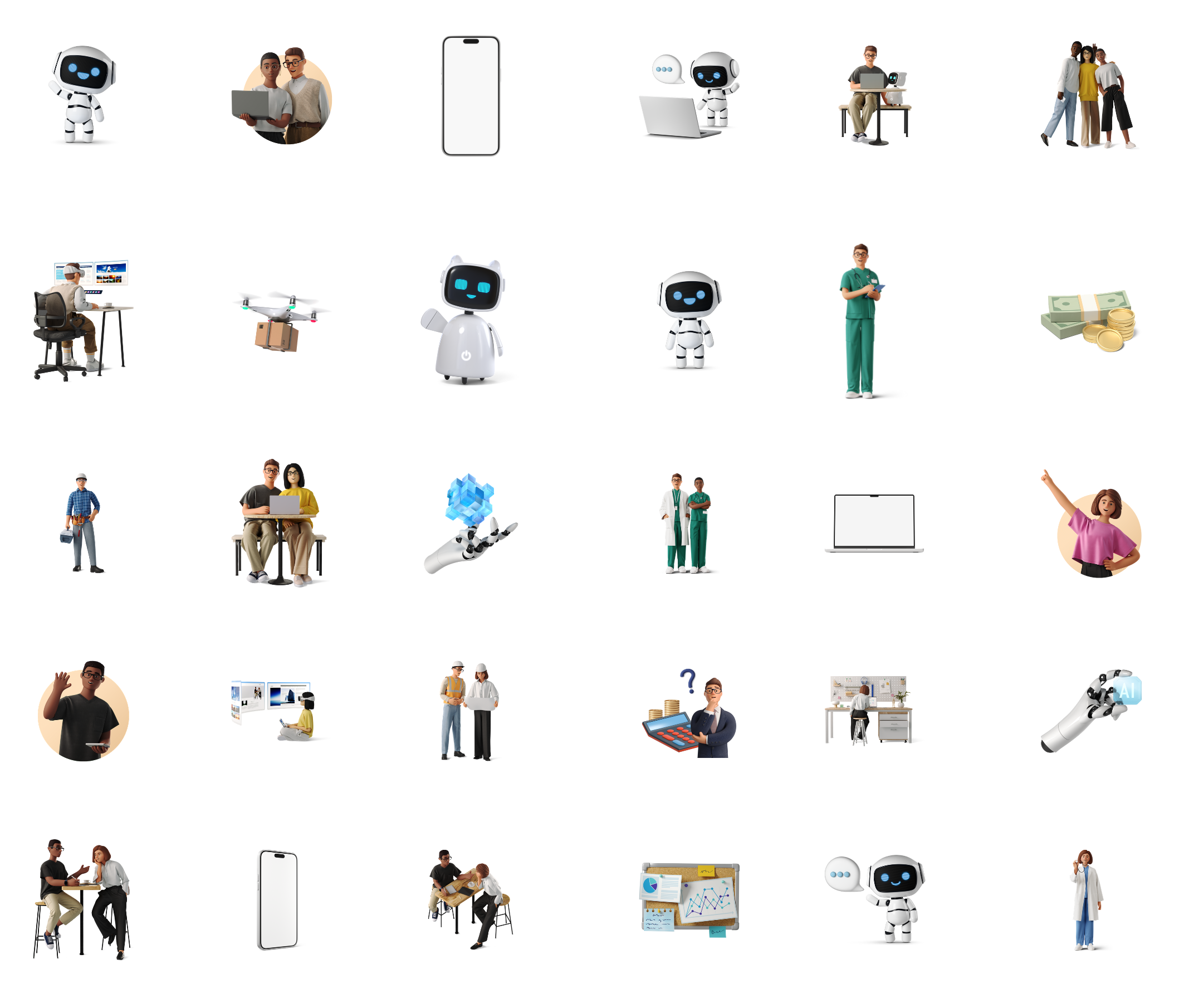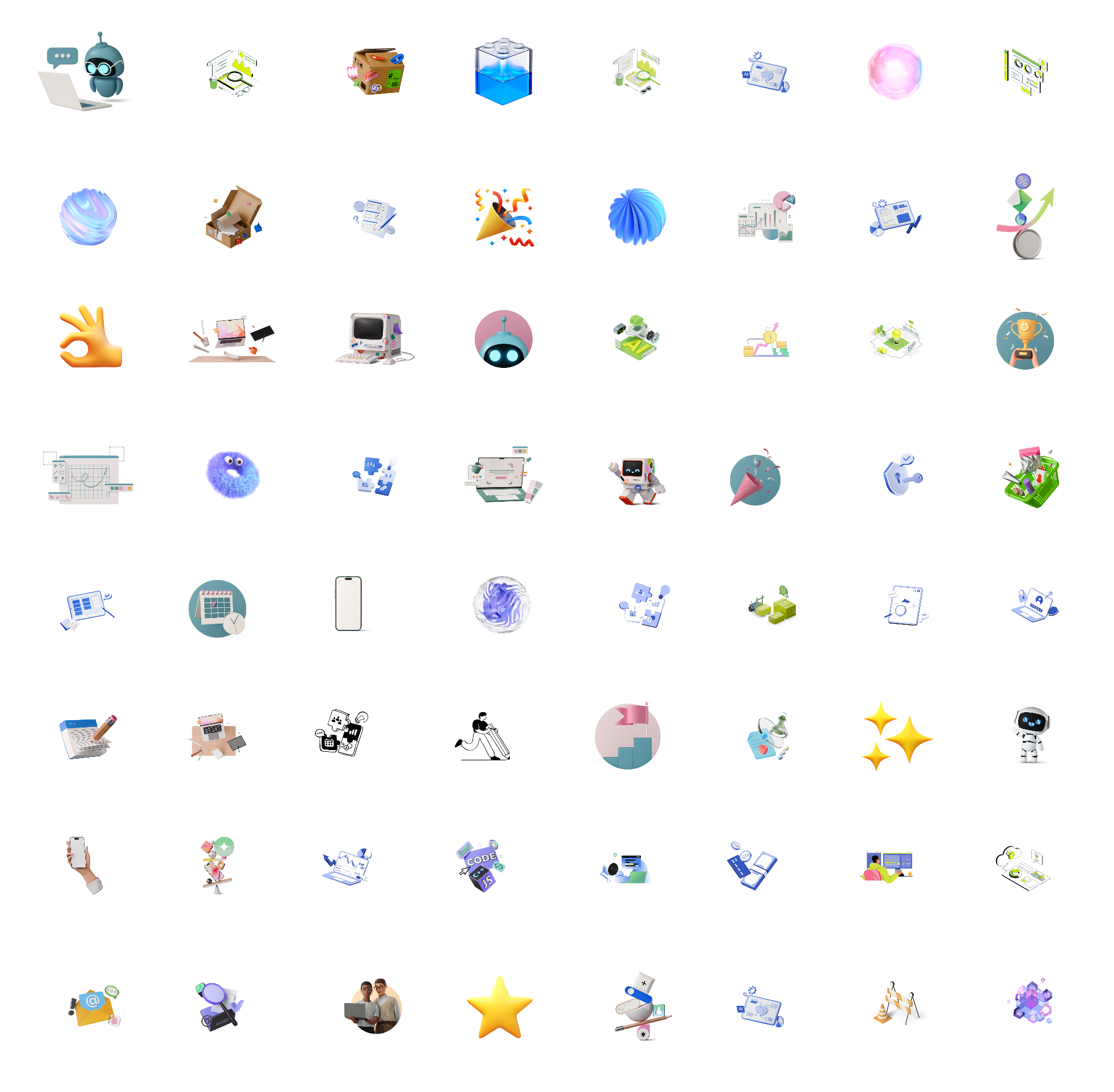How Businesses Erased Humans from Their Visual Identity
Our business: visualizing corporate identity
For over 20 years, Icons8 has served businesses by creating graphics that visualize how they want to be seen. Our clients are businesses, and they buy pictures of how they want to be portrayed. One thing remained constant throughout these years: businesses valued teamwork and wanted to appear as cohesive teams of professionals with great culture and shared success.
Our analytics: tracking business tastes at scale
As a company with dozens of in-house artists, we dedicate vast resources to analyze business tastes. We use comprehensive analytics for that—download counts, search patterns, and usage metrics. We track the leaders of downloads and understand how business preferences evolve. For years, the leaders were human-centered: teams collaborating, diverse groups working together, professionals engaging face-to-face. The world we visualized was alive, bustling with human activity.
The great vanishing
Something apocalyptic has happened in the last six months. The numbers are stark: people imagery in our 3D illustration pack dropped 87.5%—from 8 human-centered illustrations to just 1: reading further fragments.
People disappeared. But it's worse than disappearing—they became fragments. Human representation is often reduced to floating hands holding objects—a phone, a cup, making an OK sign. Humans became disembodied appendages to their devices. It's like a post-apocalypse where humanity was reduced to body parts interfacing with technology operating on its own.
In our people vs robots comparison:
- • People decreased from 28+ to 20
- • While robots increased from 3 to 12
The same trend:
- • People almost completely disappeared
- • Teamwork disappeared
- • We have more robots than people
- • We have multiple representations of AI instead
What this means
What we see now is a dramatic shift toward AI representations in every form—neural networks, robotic interfaces, abstract data flows, and isolated technology operating without human oversight. Agentic AI takes the place of people.
What does this transformation mean for businesses? They want to see themselves as AI companies now. People are either a less desired alternative or are simply irrelevant.
The new reality
What we see now is a dramatic shift where agentic AI takes the place of people. But there's a fascinating inversion: as robots gained expressive blue eyes and emotional design language, humans lost their faces entirely. AI evolved from abstract geometric shapes to beings with distinct personalities, while humans devolved from collaborative teams to faceless fragments.
Being a people company is not cool anymore. Being an AI company is everything. Agentic AI takes the place of people. The shareholder value lies in this transformation.
Perhaps we're witnessing the most honest corporate communication in decades. This shift doesn't just correspond to future robotaxi farms, but the broadest range of businesses. For the first time, companies are showing us exactly how they see the future of work: a world where humans are optional.
Why do we still bother creating human graphics?
Generated images were once not only novel but priced. Our own dataset Generated Photos made the headlines of The Verge and The Washington Post — but mass adoption has made them ubiquitous and cheap. They're now perceived as a sign of underinvestment. By contrast, human-drawn images remain expensive, so they still make a company look well-off.
We not only have to create illustrations by hand; they must look created by hand. That keeps us running in front of the latest image-generation model. We draw whatever it still can't do, and we will do it in the next years, months, or weeks before giving up to AI.
"The concept of The Spectacle and the idea that images and representation become more real than the thing itself. We're actively walking through the door of abstraction in a way that we leave our humanity and ultimately our real connection behind."— faptain-calcon22 on Reddit
